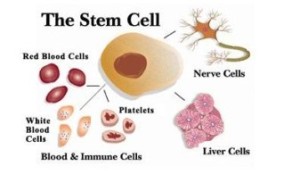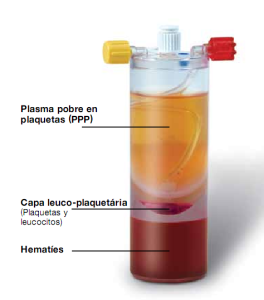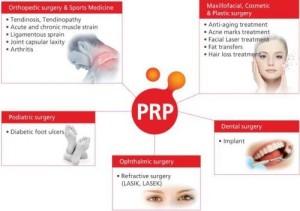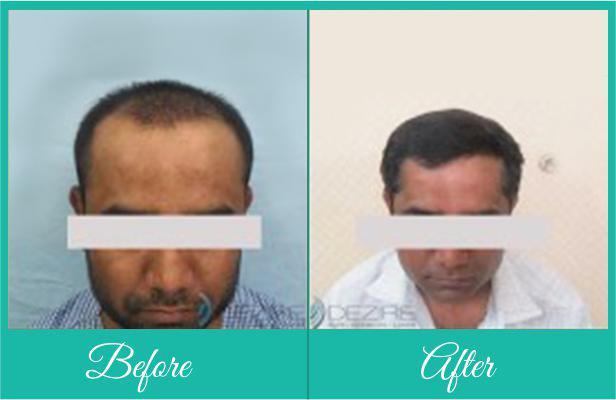
MAX FUE With Stem Cell
 Platelet Rich Plasma is a process where a patient’s blood is drawn, separated and concentrated through a process called centrifugation, and re-injected into desired areas of the body. The PRP process concentrates useful cellular components of the blood and injects them into areas where the body can utilize the additional resources.
Platelet Rich Plasma is a process where a patient’s blood is drawn, separated and concentrated through a process called centrifugation, and re-injected into desired areas of the body. The PRP process concentrates useful cellular components of the blood and injects them into areas where the body can utilize the additional resources.
Our clinic is doing STEM CELL/ PRP therapy in combination with AUTOMATED FUE for the following benefits
- Generate new hair growth
- Thicken thinned out hair
- Make hair transplants grow thicker and healthier
What Are Platelets?
 Platelets are biological constituents of blood, along with red and white blood cells. Unlike red and white blood cells, platelets do not have a nucleus and therefore do not qualify to be called “cells”. They are somewhat smaller than red and white blood cells.
Platelets are biological constituents of blood, along with red and white blood cells. Unlike red and white blood cells, platelets do not have a nucleus and therefore do not qualify to be called “cells”. They are somewhat smaller than red and white blood cells.
Platelets are probably best known as components of the blood clotting system. When injury disrupts a blood vessel and causes bleeding, platelets are quickly activated and contribute to formation of a clot that stems the flow of blood. But platelets are more than just first-line responders to bleeding injury. Every platelet is also a biochemical storehouse of regulatory, signaling and growth-factor molecules that participate in recovery and healing of tissue as well as emergency response to injury. Growth-factor molecules associated with platelets include:
- Platelet-derived growth factor (PDGF)—promotes blood vessel growth, cell replication, skin formation
- Transforming growth-factor-beta (TGF-b)—promotes growth of matrix between cells, bone metabolism
- Vascular endothelial growth factor (VEGF)—promotes blood vessel formation
- Epidermal growth factor (EGF)—promotes cell growth and differentiation , blood vessel formation, collagen formation
- Fibroblast growth factor-2 (FGF-2)—promotes growth of specialized cells and blood vessel formation
- Insulin-like growth factor (IGF)—a regulator of normal physiology in nearly every type of cell in the body.
All of these growth factors initiate and enhance physiologic processes that contribute to tissue recovery and health after injury. The growth factors are also involved in normal physiologic processes such as blood vessel formation
The rationale for use of PRP in surgery is to artificially increase the number of platelets at a site where the storehouse of growth factors in the platelets can be put to use in enhancing tissue recovery, repair and health.
What Is PRP?
 PRP is blood plasma containing a concentration of platelets many times greater than occurs normally in blood. PRP is “autologous”, meaning that it comes from the patient’s own body. This is similar to the practice of having a patient donate his/her own blood before a surgical procedure, to be used in preference to blood from the hospital blood bank should a transfusion be needed. Another example is the removal and transplantation of a patient’s own skin for a plastic surgery procedure. Because PRP is autologous, it has no potential for causing a foreign-body immunologic reaction. PRP is immunologically neutral.
PRP is blood plasma containing a concentration of platelets many times greater than occurs normally in blood. PRP is “autologous”, meaning that it comes from the patient’s own body. This is similar to the practice of having a patient donate his/her own blood before a surgical procedure, to be used in preference to blood from the hospital blood bank should a transfusion be needed. Another example is the removal and transplantation of a patient’s own skin for a plastic surgery procedure. Because PRP is autologous, it has no potential for causing a foreign-body immunologic reaction. PRP is immunologically neutral.
Advances in technology have made the preparation of PRP faster and more efficient, and increasing uses of PRP began to be found in surgical specialties. Surgical hair restoration was one of the specialty areas in which PRP began to be used.
How PRP Is Made?
- Blood is withdrawn from a patient’s arm by syringe, as it would be for any laboratory procedure.
- The tubes containing withdrawn blood are placed in a centrifuge and spun for a period of time.
- The centrifuging “spins down” the red and white blood cells and platelets and concentrates them at various levels in the tubes. Blood plasma that is rich in platelets is drawn off from the appropriate level. Plasma defined as platelet-rich plasma contains 4 to 8 times the number of platelets per cubic centimeter found in normal plasma. With a little additional preparation the PRP is ready for application.
PRP In Hair Transplantation
- To preserve and enhance hair follicle viability during and after hair transplantation.
- To promote and enhance tissue repair and healing after hair transplantation.
- To reinvigorate dormant hair follicles and stimulate new hair growth.
To Preserve And Enhance Hair Follicle Viability
Between the time that hair follicles are removed from a donor area of the scalp and transplanted into a recipient area, they are subject to damage from several causes:
- Dehydration if the donor follicles are inadequately moistened between the times of removal and transplantation.
- Oxygen and nutrient starvation due to being removed from blood supply during the harvest-to-transplantation time period.
- Temperature and acid/alkaline changes in the follicle environment.
- Revascularization injury when the donor follicles are transplanted to the recipient site and must re-adapt to having a blood supply
A common approach to maintaining donor hair follicle viability during the transition period is to keep them in a storage solution that provides a protective environment of appropriate temperature, chemical balance and nutrient supply. Recent research has indicated that addition of PRP to the storage solution improves follicle viability during and after transplantation, enhances post-transplantation tissue healing and promotes hair growth in transplanted follicles. An approach advocated by some investigators is to bathe the donor hair follicles in activated PRP just prior to transplantation.
PRP promotes hair growth from follicles by the action of platelet growth factors on hair follicle stem cells. The platelet growth factors induce follicle stem cells to shift from a dormant state to an active state that starts the process of hair production.
To Promote And Enhance Tissue Repair And Healing
In activity promoting tissue repair and healing after injury of surgery, the growth factors stored in platelets are released at a site of tissue injury, promoting tissue repair and healing. Individual growth factors such as PDGF have been used by surgeons to promote wound healing in hospitalized surgical patients. The rationale for using PRP in outpatient surgical hair restoration is to use the full array of platelet-associated growth factors to promote healing and minimize scar formation, as well as to promote maximum hair growth in transplanted follicles.
Reactivate dormant hair follicles & hair regrowth
The platelet growth factors can “wake up” dormant hair follicles and begin the production of new hair. PRP was applied after scalp skin was slightly injured to induce platelets to release growth factors at the injury site. Enhanced hair growth and hair diameter was noted over the next few months
Safety, Complications, Contraindications To Use Of PRP
PRP is immunologically neutral and poses no danger of allergic, hypersensitivity or foreign-body reactions.
Sterile technique must be used at every stage of PRP preparation and application. Sterile technique is especially important if a patient has an underlying medical condition that predisposes to infection.
Procedure

Step 1
: Preparation of donor site and marking of hairline:Marking of new hairline is done according to your previous hairline or your preference. It is done accordingly in a natural and scientific manner so that new hairs give you the most natural appearance which suits your face and forehead
A small amount of blood is drawn from an accessible vein in your hand after following sterile blood draw precautions.
Step 3:
Local anesthesia:You will be lying comfortably on an operative table and the area is prepared for the procedure. The local anesthesia is injected with very fine size needle carefully and ice packs are used to make the area numb so no pain is felt during the injection. With just one small prick the whole area is made numb so no pain is felt during the procedure.
The hair restoration procedure can be performed in isolation or as an adjunct to the FUE procedure.
Only PRP:The Platelet Rich Plasma containing the reparative components is injected into the area of the scalp that is devoid of natural hair growth. This can be done essentially as an outpatient procedure.
PRP plus FUE:The Platelet Rich Plasma is also used as an adjunct to the FUE procedure. Here the grafts are soaked in the Platelet Rich Plasma during the period between the dissection of the graft and engraftment to the site of hair loss. This increases the graft survival and preservation during the course of the procedure.
Step 2
: Preparation of Platelet Rich Plasma:At Advanced Hair Transplant Centre we make use of the Harvest SmartPReP2 Technology (Harvest Technologies GmbH, Munich, Germany).SmartPReP is the first system designed for rapid, point-of-care preparation of Platelet Rich Plasma (PRP). The SmartPReP produces a predictable Autologous Platelet Concentrate (APC+™) enriched with multiple Growth Factors. SmartPReP produces viable platelets increased 4X or greater above baseline levels; the clinical requirement needed to accelerate healing. SmartPReP provides the necessary concentrations of platelets, growth factors, and white blood cells vital for initiating and accelerating tissue repair and regeneration. The device is US FDA, CE and DCGI approved.
From the time of blood draw, it takes just 15 minutes to obtain the final Platelet Rich Plasma.
Step 4:
Post procedural care:The hair is left unwashed post procedure at least for the next 24 hours with a head gear on. No bandages / dressing is required at the site if Platelet Rich Plasma is the sole protocol used.
THE RETURN TO USUAL ACTIVITIES
Usually there is no time lag post procedure and can resume regular activities just after the procedure
FAQ’s
How the procedure of stem cell / PRP therapy done for hair loss?
In this therapy, patient’s own blood is taken and sent to lab to prepare a layer of plasma, rich in platelets and different growth factors. It is then injected into the scalp with hair thinning/loss. This procedure is done under local anaesthesia to make it nearly pain free. Scalp roller with 1mm fine needles is subsequently used over the treated area to stimulate the stem cells as well as to increase the blood supply leading to better hair growth. Patient can shampoo next day morning as usual.
Where is this modality effective?
PRP seems to work better in patients with diffuse hair thinning caused by any cause including alopecia androgenetica (common baldness). It also found to be effective in alopecia areata. It is not that much effective in patients with complete baldness and scarring alopecia. It can be used in conjunction with minoxidil, finasteride & hair transplant.
How does it work?
It is a biological therapy. Prepared plasma contains platelets which are numerous than in normal blood. It has different growth factors especially PDGF and VEGF. Both these factors have significant positive effects on hair growth. PRP may actually wake up dormant stem cells in the follicles giving new hair growth. So this therapy gives strength to the existing hair, reduce hair fall and likely to increase the actual number of hair by stimulating the stem cells.
When to see the progress?
Generally hair shaft become thicker and looks more lustrous with reduction in hair fall within 4-6 weeks while new growth is likely in about 4 months
Side effects /risks/complications
PRP therapy is relatively painless and void of side effects apart from the initial minor redness, swelling and possible bruising. These side effects resolve quickly in a matter of days where scalp rejuvenation and hair growth improvement will start to take over. This treatment is associated with no risk of allergy or infections as we are essentially using your own byproduct
What is the frequency of PRP?
depending on the stage of hair loss and severity the optimum results usually require approximately 3 sessions performed 4 weeks apart.
Is it suitable for me ?
PRP has been used successfully in other medical and surgical disciplines for many years. PRP is safe and natural because the procedure concentrates the good cells from your own body directly back into the area where it is needed. There is absolutely no chance of getting a blood infection from another human being. PRP involves using your own cells and it will not be rejected by your immune system.
Can it be combined with other medical treatment for baldness?
PRP therapy can be used as additive therapy for those patients who are not eligible for surgery or who want to delay hair restoration surgery. As a non-surgical treatment option, PRP therapy can be used with Minoxidil and 5 DHT blockers or for those patients who can not tolerate or have side effects with these medications

